 Your new post is loading...
 Your new post is loading...

|
Rescooped by
Alessandro Rea
from E-Learning-Inclusivo (Mashup)
October 27, 2016 2:32 PM
|
No es cierto que se aprenda de los errores, realmente aprendemos cuando volvemos a encontrarnos con situaciones donde precisamente poner en práctica ese aprendizaje experiencial. En otras palabras, aprendemos cuando demostramos que lo hemos hecho. Así si tendría sentido este refrán, ¿verdad? Salvando obstáculos A lo largo de nuestra vida, desde que nacemos, no paramos ni …
Via Marta Torán, juandoming

|
Rescooped by
Alessandro Rea
from E-Learning-Inclusivo (Mashup)
October 27, 2016 2:20 PM
|

|
Scooped by
Alessandro Rea
July 21, 2016 1:13 AM
|
An 18-hour flight promises an exhausting travel itinerary for most of us, but for “Crush” singer Yuna, the marathon trek is in fact an invigorating jolt. T
Educators can now easily adapt the digital resources from one of the country's most prominent museums for their lessons with this week's launch of the Smithsonian Learning Lab.
Via John Evans, Marco Favero
Despite all the press makerspaces receive, not all are successful. Oftentimes when schools create makerspaces, excitement builds for the first few weeks as students create and explore. But as time passes, students lose interest, and the makerspaces languish silently, gathering dust. The tools that filled those makerspaces — big and small, expensive and reused, high-tech and no tech — waste away, a constant reminder that the schools' investment was all for nothing.
An autopsy reveals the cause of death: "They didn't really plan and create a makerspace that's authentic to their community," said Laura Fleming, library media specialist at New Milford High in New Jersey, and author of Worlds of Making: Best Practices for Establishing a Makerspace for Your School.
But it doesn't have to end this way. By following four steps, education leaders, students, teachers, parents and community members can work together to plan vibrant makerspaces that go the distance.
Via John Evans

|
Scooped by
Alessandro Rea
June 29, 2016 2:33 AM
|
Voici 11 mini-robots, pour jouer et apprendre, à découvrir sans tarder : Thymio II, Lego Mindstorms, Metabot, Scribbler, BeeBot, Ozobot, Meccanoid, Sphero.
Via Michèle Drechsler, Anne Jacob
The digital economy has been described as the economic activity that materializes due to billions of online connections each day among people, companies, data, and devices.
While it may seem natural to focus on the business implications of the digital economy, it will also have a profound impact on education. So if you happen to be an undergraduate, graduate, or MBA student, you owe it to yourself to understand not only the digital economy, but also how your education will prepare you to make the most of the opportunities that present themselves.
One thing’s for certain. When it comes to education and the digital economy, your odds of success will largely depend on the information and communications technology (ICT) skills you develop during your academic career, both as part of the curriculum and as part of your own initiative to pick up necessary skills, because you’ll fall behind if you’re found lacking.
Via Edumorfosis, juandoming

|
Rescooped by
Alessandro Rea
from MiniTool Software Solution
June 29, 2016 2:30 AM
|
Why does our computer runs slow? How can we speed up a slow computer? You can find correct answers from this post.
Via MiniTool Software

|
Scooped by
Alessandro Rea
June 16, 2016 2:36 PM
|
Of course you’re going to use the camera on your phone to snap some superb selfies and sweeping landscapes, but there are plenty of other uses for it that you should be aware of.
WHAT Will Influence EDUcation In The Future? Through ICT the Real-World and especially the Virtual-World (both are influencing each other...) are changing quicker then WE can learn about, BUT WE must adapt to it and so must EDUcation! Therefore Universities must do research about the How-To to adapt and teaching about it... Luxembourg,…
Via Gust MEES
Students and teachers speak out on what they want for the future of moblity in this survey from Project Tomorrow. | EFL and ESL Techno Skills
Via juandoming

|
Scooped by
Alessandro Rea
May 14, 2016 2:47 AM
|
Mindfulness is a simple, research-proven technique that physically alters your brain. Learn how to use it to become more effective and less stressed.
|

|
Rescooped by
Alessandro Rea
from E-Learning-Inclusivo (Mashup)
October 27, 2016 2:21 PM
|
Actualmente existe un gran desfase entre lo que el mercado laboral demanda de un egresado y lo que la educación tradicional está proporcionando. El término competencias empezó a ser utilizado en el ámbito laboral sin embargo, en años recientes este concepto ha tomado mayor relevancia dentro del ámbito educativo debido a su gran potencial para transformar y hacer más eficiente el proceso de aprendizaje. La Educación Basada en Competencias (EBC), a diferencia del modelo tradicional, no se basa en el sistema de créditos por horas para la obtención de grados o certificaciones, sino que se trata de un enfoque más holístico de la educación. En esta edición analizamos esta tendencia que amenaza con abatir la hora crédito y la educación tal y como la conocemos. En esta edición podrás encontrar: ¿Cómo funciona la Educación Basada en Competencias?Rol del profesor en la EBCCasos relevantes¿Hacia dónde se dirige esta tendencia?DesafíosAcciones recomendadas para docentes y líderes académicos
Via Ramon Aragon, Edumorfosis, Net-Learning, Kate Kaus_ Katerin Hernández C., juandoming

|
Scooped by
Alessandro Rea
September 7, 2016 4:02 AM
|
Brain scans have found that dogs use different parts of their brains to process speech, and can tell what words mean if we use the right tone
"Flashy spaces and shiny toys in makerspaces are enticing, but it takes time and explicit scaffolding to develop a true Innovator. Building and providing the space for Making to happen is one thing; nurturing a mindset that gives students the mental tools to engage with said spaces is a much larger, and timely, endeavor.
Best defined by the research and work of Carol Dweck, Jo Boaler and Eduardo Briceno, growth mindset is the recognition of the brain as a muscle that—with practice, effort, and nurturing—can continue to grow and develop. When you think of an inventor or innovator, past or present, what descriptors come to mind? Creative. Persistent. Curious. Fearless. Passionate. But educators know that most students don’t show up to your class on the first day of school exhibiting these qualities.
So how do we provide not only the physical tools but the mental tools to Make? Here are the essential pieces:
1. Give students permission to play
2. Build those Maker muscles
3. Reflect often
4. Have some accountability
5. Cultivate an appreciation for failure
6. Use role models to inspire students to become Makers"
Via John Evans

|
Scooped by
Alessandro Rea
July 6, 2016 5:18 AM
|
Recycle Bin recovery seems quite difficult to us if the Recycle Bin is emptied or the files are further deleted from it; however, it is not the case,. This tutorial shows how to restore deleted files from Recycle Bin in Windows and Mac.

|
Rescooped by
Alessandro Rea
from DIGITAL LEARNING
June 29, 2016 2:33 AM
|

|
Scooped by
Alessandro Rea
June 29, 2016 2:31 AM
|
A lot of people are looking for methods for SSD data recovery, but most of them failed finding one. Now, we’ll work this out.
SSD is the acronym of Solid State Disk, also known as Solid State Drive. Despite that the first solid state disk drive was developed by Storage Tek in 1970, it was not until the year of 1989 that we finally witness the birth of the first solid state disk in the world.
After about 20 years of development, the manufacturing technology has become gradually mature and the SSD has been applied to all walks of life. Though SSD has a high cost, it is gradually spread to the DIY market. More and more computer users choose to replace their old hard drive, which is relatively small in capacity, with a new SSD, whose capacity is relatively large.
SSD (Solid State Drive) is a kind of hard drive which is made by solid state electronic memory chip array. And it consists of control unit and storage unit (FLASH chip and DRAM chip). SSD is exactly the same with common hard drive in the specification and definition of interface, function, usage and product shape and size. The most obvious difference between SSD and the old fashioned hard drive lies in hard drive technology.

|
Scooped by
Alessandro Rea
June 28, 2016 1:47 AM
|
If your external hard drive keeps asking you to format it after you have tried all kinds of solutions, you can download free MiniTool Power Data Recovery which is an excellent program that brings file recovery to Windows to have a try. Follow these steps to carry out data recovery process from not formatted external hard drive:
Step 1. Launch MiniTool Power Data Recovery, and then select "Damaged Partition Recovery". You can see this module is specially designed for recovering data from damaged, RAW, or formatted partition when moving mouse over it. So it is most suitable for not formatted hard drive data recovery.
Step 2. Then select the external hard drive to have a full scan (We take a 16 GB Kinston flash drive for example here). The scanning time depends on the capacity of your data in it.
Step 3. When the scanning is finished, Power Data Recovery will show you the files it has found in the hard drive in tree structure. Tick the files and click "Preview" to check whether the files are the right ones. Note: you can press "Filter" button to choose specific file types to be shown in the middle pane.

|
Scooped by
Alessandro Rea
June 8, 2016 4:13 PM
|
Reusing materials can transform value chains and operations.
38 Of The Best Educational Games For iPad
Via juandoming
“ enablingthefuture.org is the personal, privately-run website of Jennifer Owen. Jen is the wife of Ivan Owen, who co-created the first 3D printed hand for a child in South Africa and released the files open source so that anyone, anywhere in the world could take those files and print a hand for themselves or someone in need. She has been a volunteer and participant in the field of open-source, 3D printed prosthetic hands for the past 4 years. Along the way, she has sought to highlight and document stories from the e-NABLE Community of volunteers on the topic of low-cost prosthetics from around the world, as well as to create an information resource for people interested in learning more about the history, design & fabrication of these devices.”
Via John Evans
|
 Your new post is loading...
Your new post is loading...
 Your new post is loading...
Your new post is loading...














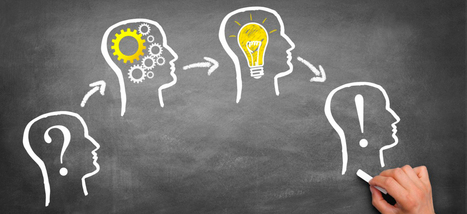

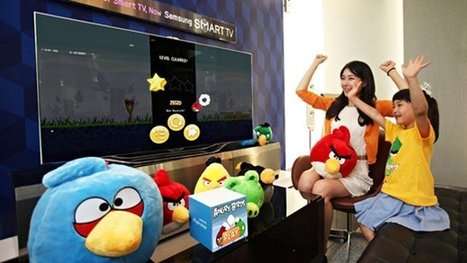




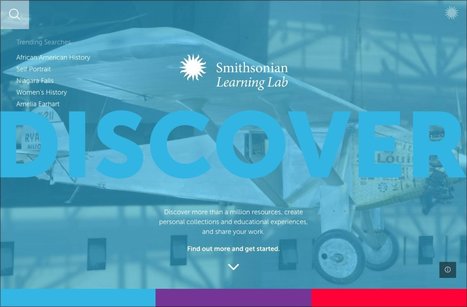
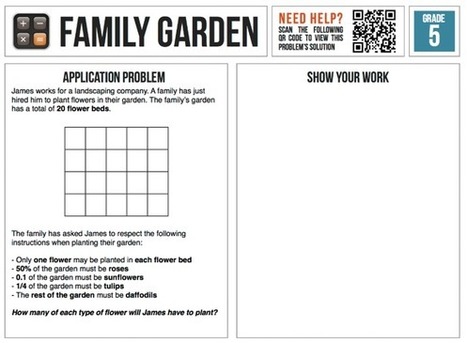
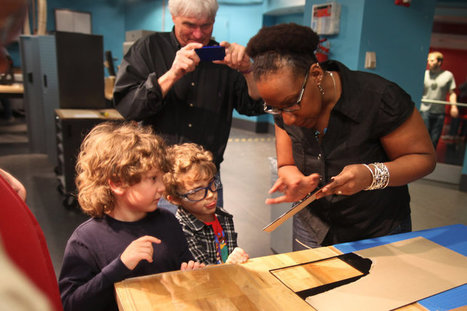
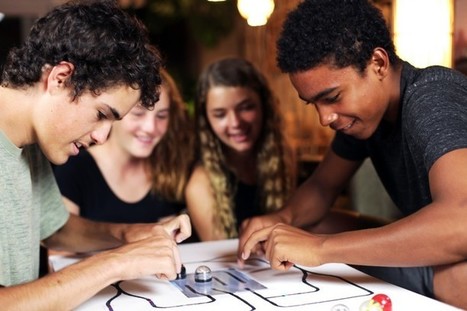

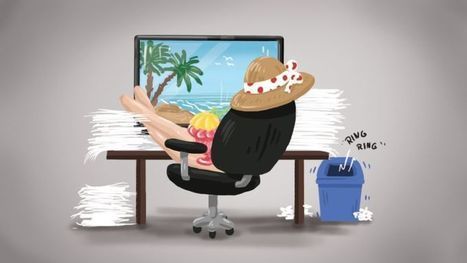


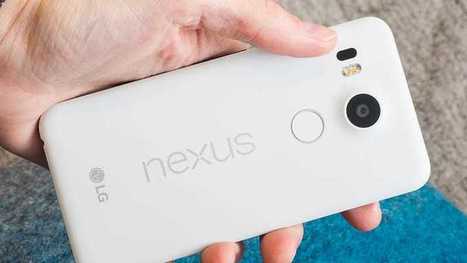
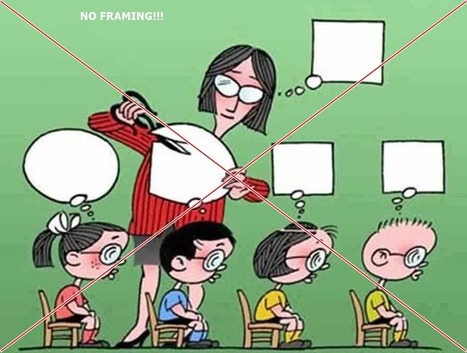
![What's the Future for Mobile Devices in the Classroom? [#Infographic] | EFL and ESL Techno Skills | BeBetter | Scoop.it](https://img.scoop.it/uXz_YYO9WyD2Frga_THE7Tl72eJkfbmt4t8yenImKBVvK0kTmF0xjctABnaLJIm9)
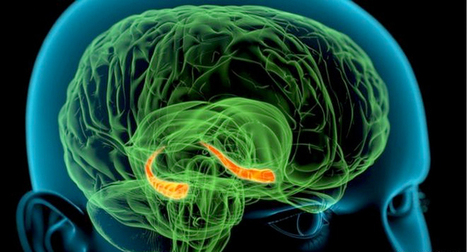
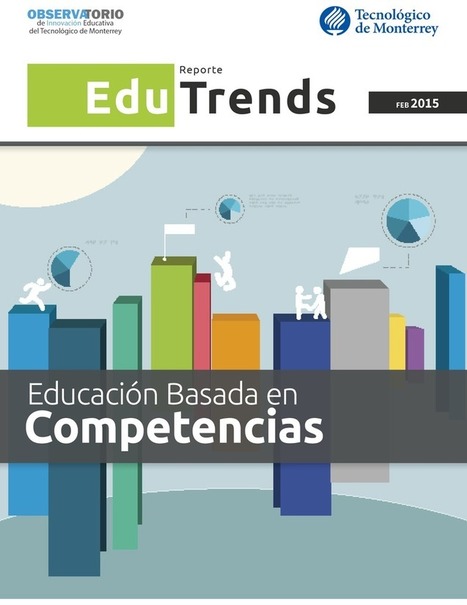

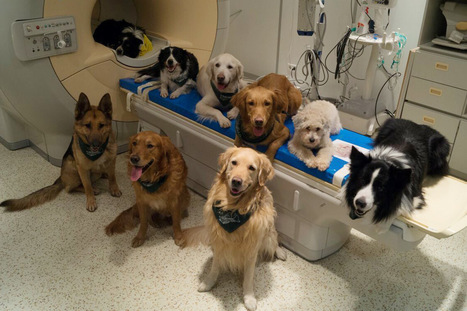


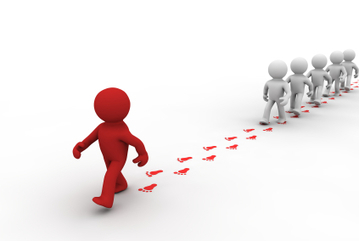



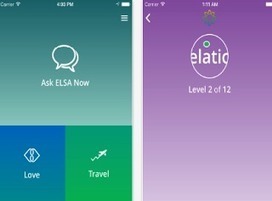


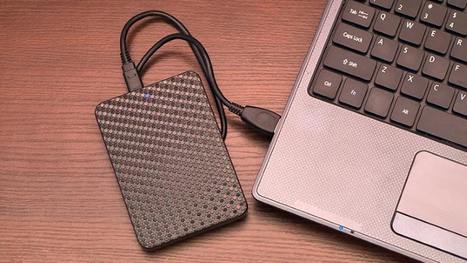

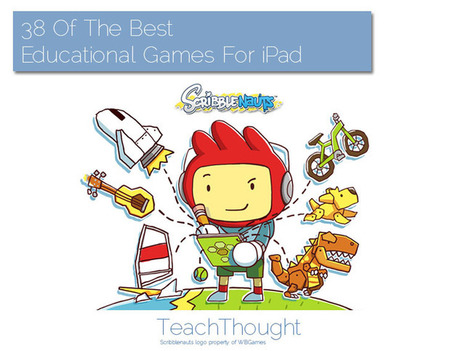
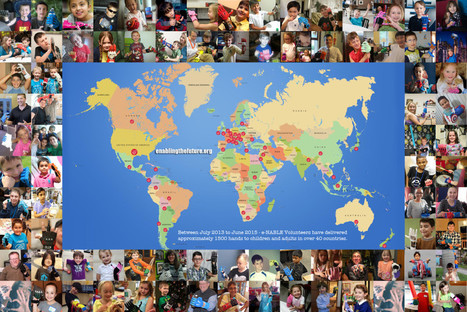





Introducing Pet Diaries: Life lessons learned from our pets. This 12-part series is brought to you by GOOD, in partnership with Purina ONE®, and explores how having a pet can change your place in your neighborhood, community, and beyond. Check out more stories at the GOOD Pets hub.
Most families aren’t your stereotypical Leave it to Beaver types.
Sometimes kids grow up having to learn how to be adults the hard way, or along paths that aren’t always smooth. While traveling on my own rocky path, I was blessed to have a four-legged friend as my guide.
When I was 15 years old, my mother gave me up to foster care. She was an alcoholic and I was a rebellious teenager trying to get attention any way I could. I’d get in trouble with the police for smoking cigarettes underage and being out too late. I ran away multiple times. My mother and I would have power struggles, and I’d fight with her often.
My dad worked full time in Boston (more than an hour away), and I only saw him every other weekend, so when the court date came, it was completely unexpected when he showed up to take full custody rather than giving me up to the state. My father did his best to get me back into his life, and I had to live out of a camper in the backyard while he put on an addition to his house. As I was going through physical, emotional, and behavioral changes as a teenager, I was confused and questioned my own purpose. Being the new girl in school was difficult because cliques were already established. I felt like an outsider, with no identity or role. I remember eating lunch in a bathroom stall due to my complete lack of confidence.
A year later, in my junior year of high school, I got off the bus to discover my father had adopted a Catahoula Leopard puppy from the SPCA, because now that we had a yard, he was excited to have a pet. Due to raging hormones, I was angry at the world, and I wasn’t excited about anything, especially a needy puppy. So when it started following me to my camper at night, it was unexpected, but oddly comforting. I named her Annie, after the orphan from the comic strip and musical, and she quickly became a companion to me.
Most teenagers tend to be pretty self-absorbed, caring strictly for their own well-being. My relationship with Annie prohibited selfishness because every day I needed to go home to let her out and make sure she was fed and had water. The day she got attacked by a porcupine, I took her to the vet immediately and paid the expensive bill without question, even though I only had a part-time job at a convenience store. It was Annie who valued me and gave me a role to play, which was caregiver. She trusted me for what I gave her, and she gave back. With those icy blue eyes looking straight into mine, she made me feel like I was being heard, and she would answer me, or at least comfort me, without judgment. Annie also protected me against untrustworthy people. How she barked and reacted to visitors even informed whom I chose to hang out with later. When I was sad, she’d nuzzle me with affection, making me see that someone was concerned about my well-being.
A year after my father fixed up his house, which was livable but not finished, he decided to move in with his girlfriend two towns over. I was left to live alone while I finished up high school, so in a way, Annie and I became orphans again. During this difficult time, I made the unconventional decision to drop out of school to work and live at a ski resort with a group of friends. Although it was a big change for me, those few months as a ski bum were some of the best in my life. While I had time to reflect, having Annie loyally by my side gave me confidence in who I was and the choices I was making. And, when Annie and I returned to my dad’s empty house, I went back to school, graduating with honors the following year.
Growing up without a “traditional family,” I learned that my dog was my family, and that was enough. This was true even later in life, when I found myself in an unhealthy relationship with my daughter’s father. Because Annie never abandoned me, I knew I wouldn’t be alone as long as I had her. So, when it was time to get out of the abusive relationship, I took my daughter in one arm and Annie in the other, and left.
Annie by Heather’s daughter’s side when she had the flu
Now, as I pursue a Master’s in Art Therapy at Lesley University, I recognize the dangers of abandonment and lack of guidance. Despite the odds, I’ve learned how to be a wonderful mother and most recently, a devoted wife to a loving husband. Fifteen years have passed since Annie became a part of my life, and she is starting to show signs of frailty. But every morning, despite her ailing hips, she jumps up on my bed the second I’m awake. She is still teaching me valuable lessons, especially the importance of being thankful for the beautiful life I live. I firmly believe that I have become a well-adjusted adult because Annie had faith that I would, and she stood by me until I did. I learned that I am worthy of healthy and reciprocal relationships because Annie was the first to offer me just that.
Heather and her family
Photos courtesy of Heather Cohen